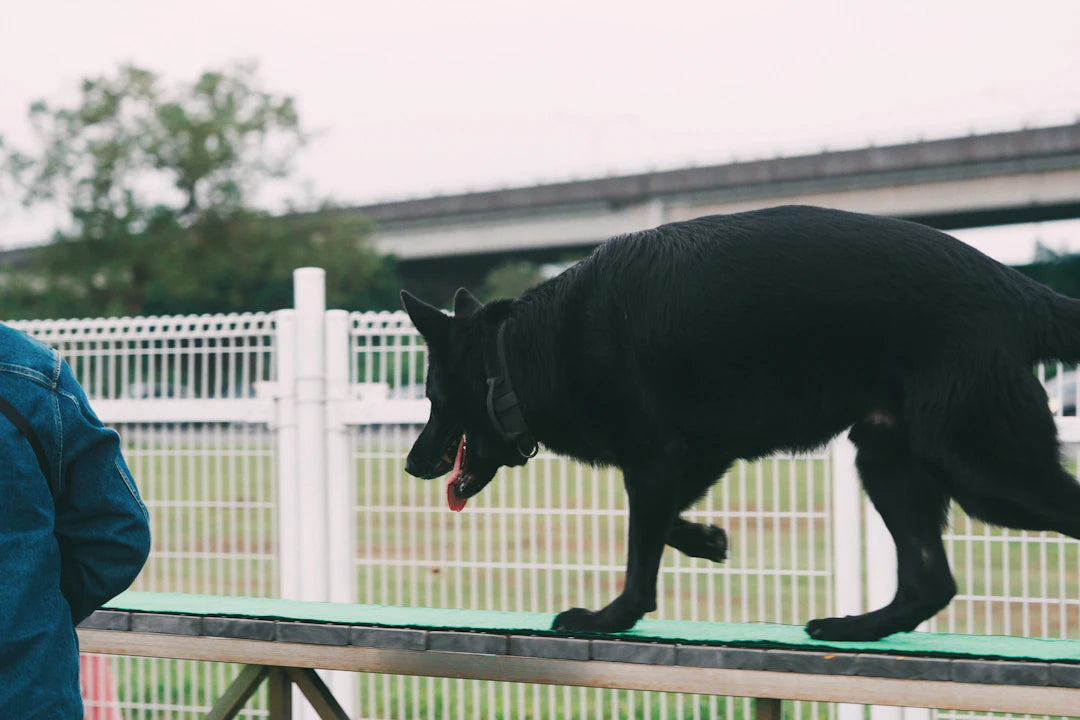
The Essential Role of Exercise in Your Pet's Health
Share
Frequently Asked Questions
1. Why is exercise important for pets?
2. How much exercise do dogs need?
3. What are some fun ways to exercise my dog?
4. What signs indicate that my dog needs more exercise?
5. Should I consult a veterinarian before changing my dog's exercise routine?
When it comes to ensuring the health of your beloved pets, one aspect that stands out is exercise. Just like humans, animals require physical activity to thrive both physically and mentally. In this article, we’ll explore the numerous benefits of exercise for your pets, especially dogs, how much they need, and some enjoyable ways to incorporate movement into their daily routine. By understanding the role of exercise in your pet's health, you’ll be equipped to provide a happier life for them, which is surely the goal of any pet parent.
The Importance of Regular Exercise
Regular exercise is essential for maintaining your pet's overall health. It plays a vital role in:
- Preventing obesity
- Enhancing mood and behavior
- Fostering agility and endurance
- Improving digestive health
- Strengthening the bond between pet and owner
Preventing Obesity
Obesity is a growing concern among pets. Just like in humans, excess weight can lead to a host of health issues, including diabetes, joint problems, and heart diseases. Regular exercise helps maintain a healthy weight and boosts metabolism. By engaging your dogs in physical activities, you can help them shed those extra pounds and achieve their ideal weight.
Enhancing Mood and Behavior
Exercise greatly influences your pet's mental health. Dogs, especially, are prone to anxiety and boredom if they don't have enough physical stimulation. Regular exercise releases endorphins, which can help your furry friend feel happier. Plus, providing an outlet for pent-up energy can reduce destructive behaviors caused by boredom.
Fostering Agility and Endurance
Just like humans need to build muscle and endurance, your pets also need to develop their physical capabilities. Regular activity can help strengthen their bones and muscles, improving their agility and endurance over time. This is especially crucial for active breeds that thrive on vigorous exercise.
Improving Digestive Health
Physical activity aids in digestion. Dogs that lead sedentary lifestyles may suffer from constipation or sluggish digestion. Walking, running, or playing fetch helps stimulate the digestive system, promoting healthy bowel movements. This is yet another reason to get moving!
Strengthening the Bond
Exercising together fosters a special bond between you and your dog. Whether it’s a leisurely stroll in the park, a spirited game of fetch, or an engaging hiking trip, these shared experiences create lasting memories and promote trust. Your dog thrives on interaction and companionship, and nothing beats the joy of spending quality time together while also reaping health benefits.
How Much Exercise Do Dogs Need?
The amount of exercise your dog needs can vary widely depending on their age, breed, and health status. Generally, most dogs benefit from:
- Puppies: 5 minutes of exercise per month of age, up to twice a day
- Adult dogs: At least 30 minutes to 2 hours of exercise daily
- Senior dogs: Shorter, gentler activities for their comfort and well-being
Factors Influencing Exercise Needs
While the aforementioned guidelines serve as a great starting point, several factors may influence your dog's specific needs:
- Breed: High-energy breeds (like Border Collies and Terriers) may need more exercise than lower-energy breeds (like Bulldogs or Basset Hounds).
- Age: Puppies require shorter bursts of energy, while adults need longer, more sustained periods of activity.
- Health Status: Always consult your vet if your dog has health issues to get a tailored exercise plan.
Fun Ways to Exercise Your Dog
Now that we understand the importance and variety of exercise for your pet, it's time to explore some creative solutions to keep your dog engaged.
Engaging Playtime
Interactive play is great for fostering camaraderie while providing an excellent workout. Here are some dynamic activities to consider:
- Fetch: A classic game that appeals to virtually every dog. Simply toss a ball or toy and let your dog chase it down!
- Tug-of-War: This activity not only exercises but also encourages mental engagement.
- Obstacle Course: Set up a small obstacle course in your backyard or any open area and guide your dog through it.
Taking Nice Long Walks
Leisurely strolls might sound simple, but they provide plenty of benefits! Aim for a brisk pace, which can elevate both you and your dog’s heart rate. Consider taking along a large reusable tote to carry along essentials, such as water, dog treats, or waste bags. This way, you can prepare for longer outings while keeping your hands free!
Field Trips and Adventures
Consider varying your routine by taking your dog on new adventures. Explore nearby parks, walking trails, or even a beach day where they can splash in the water. Different environments provide new stimuli for dogs and keep their interest piqued.
Group Classes and Meetups
Enroll your dog in group classes. Activities such as agility, obedience training, or even dog yoga can be both beneficial and fun! Not only does it promote exercise, but it also allows both of you to socialize with other dog owners, which can be a lot of fun.
Signs Your Dog Needs More Exercise
It can sometimes be challenging to determine if your dog is getting enough exercise. Here are some signs that your furry friend might need more activity:
- Excessive Barking or Whining: These behaviors often indicate boredom or anxiety that physical activity could mitigate.
- Destructive Behavior: Dogs that dig, chew on furniture, or act out may be trying to express their need for more exercise.
- Weight Gain: If your dog is gaining weight, it’s likely due to insufficient activity levels.
- Hyperactivity: If your dog seems restless and can't calm down, it may need more opportunities to exhaust energy.
Incorporating Exercise into Your Daily Routine
Life can get busy; however, incorporating exercise into your daily routine doesn’t have to be overwhelming. Here are some practical tips:
- Schedule Activity: Set aside specific times each day dedicated to exercise. This acts as a reminder and makes it easier for you both.
- Combine Errands with Exercise: If you're going to the store, bring your dog along with you! A quick walk after shopping can be great for both of you.
- Use Technology: Consider apps that help you find nearby parks or other dog-friendly locations, and track your exercise goals.
Watch for Weather Changes
The weather can affect your dog’s exercise routine. On colder or rainier days, plan shorter indoor play sessions or invest in appropriate gear, like dog coats, for walks. Conversely, on hot days, take walks during cooler times, such as early mornings or evenings. Always prioritize your pet's comfort and safety.
Before Starting a New Exercise Program
If you are considering changing your dog's exercise routine, it’s wise to consult with your veterinarian first, especially if your dog is older or has health concerns. A professional can advise on the best practices to minimize the risk of injury and ensure a healthy fitness journey.
Paving the Way for Healthier Pets
Incorporating exercise into your pet’s daily routine is a crucial investment in their long-term health and happiness. By engaging in regular physical activity, you not only enhance their physical well-being but also improve their mental health and foster an unbreakable bond between you and your furry friend. Remember, every little bit counts—a short walk around the block, a fun game of fetch, or even a jog in the park makes a significant difference.
Embrace the joy of exercise together, and your dog will thank you for it with wagging tails and endless affection. Let’s get moving toward a happier, healthier pet today!

